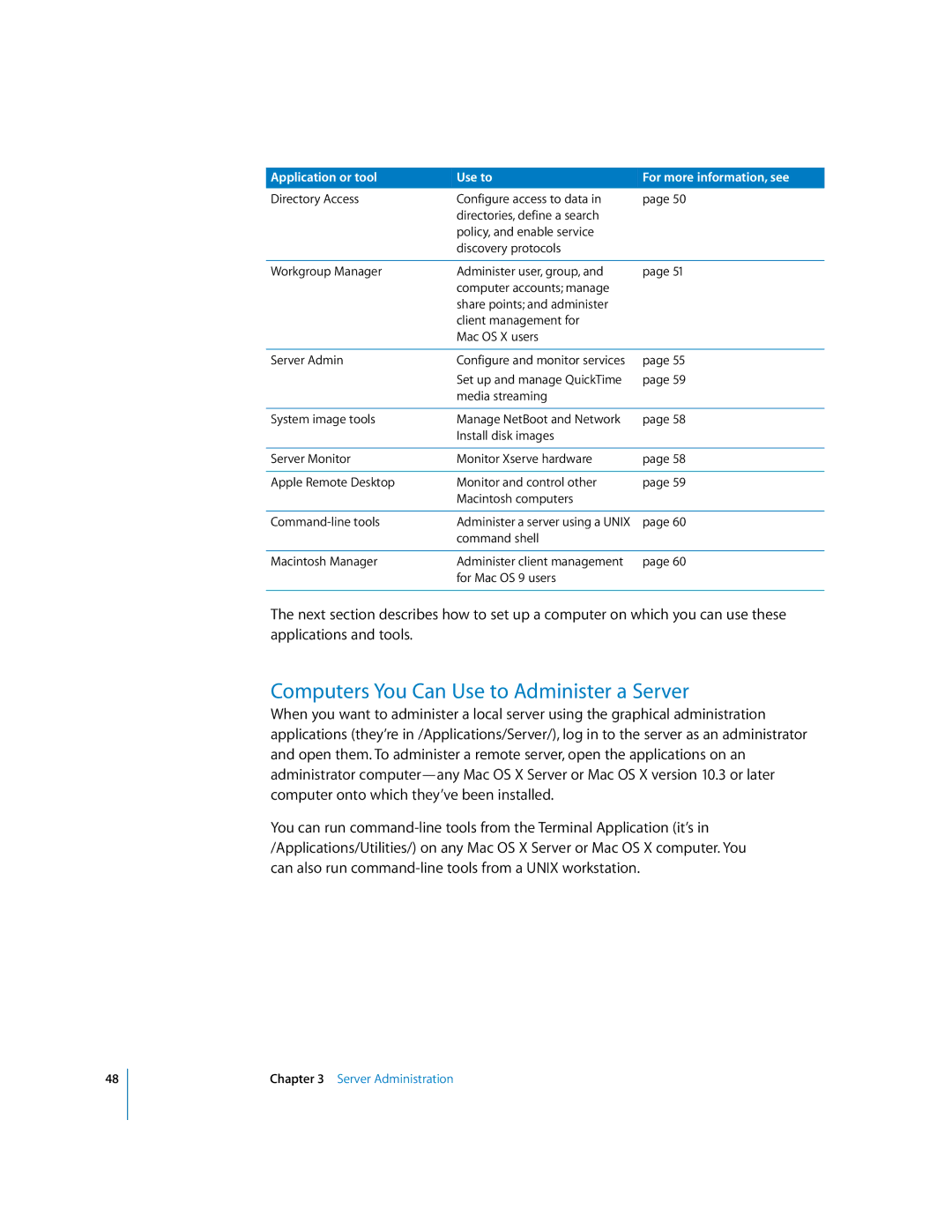
48
Application or tool | Use to | For more information, see |
Directory Access | Configure access to data in | page 50 |
| directories, define a search |
|
| policy, and enable service |
|
| discovery protocols |
|
|
|
|
Workgroup Manager | Administer user, group, and | page 51 |
| computer accounts; manage |
|
| share points; and administer |
|
| client management for |
|
| Mac OS X users |
|
|
|
|
Server Admin | Configure and monitor services | page 55 |
| Set up and manage QuickTime | page 59 |
| media streaming |
|
|
|
|
System image tools | Manage NetBoot and Network | page 58 |
| Install disk images |
|
|
|
|
Server Monitor | Monitor Xserve hardware | page 58 |
|
|
|
Apple Remote Desktop | Monitor and control other | page 59 |
| Macintosh computers |
|
|
|
|
Administer a server using a UNIX | page 60 | |
| command shell |
|
|
|
|
Macintosh Manager | Administer client management | page 60 |
| for Mac OS 9 users |
|
|
|
|
The next section describes how to set up a computer on which you can use these applications and tools.
Computers You Can Use to Administer a Server
When you want to administer a local server using the graphical administration applications (they’re in /Applications/Server/), log in to the server as an administrator and open them. To administer a remote server, open the applications on an administrator
You can run
Chapter 3 Server Administration
